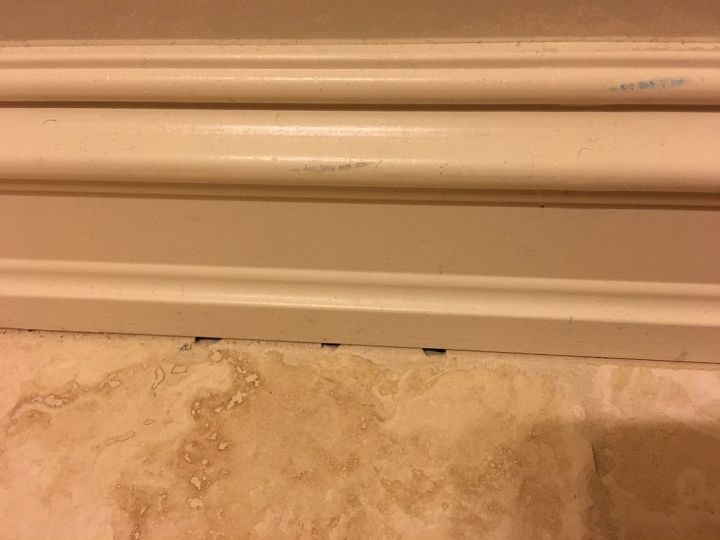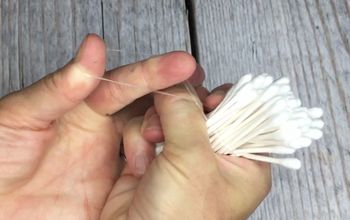Why do Marble floor tiles crack?
-
Having installed thousands of sq feet of tile (marble included) a lot if this depends on the "quality" of the tile itself. I have seen some where every tile is reinforced with a fiberglass mess and an epoxy sealer on the back...this helps a lot. Other stone is just marginal to begin with. You will see far more trouble when comparing cheap economy tile (far east import) that has lots of "fill" (this is a stone colored resin that is applied to natural voids in Travertine) Marble is a beautiful stone but its use should be taken into consideration. Floors and kitchen counters are poor choices due to marbles "softness" and staining potential. Acid etching is another issue, marble is a type of limestone which dissolves in acid. Shower walls and backspalshes are a better choice. When I install marble I typically get 20% more material if the stone is of lower quality, pieces of a weak nature are simply not used, experience in "reading" the stone will show you which ones are suspect to fail.
 KMS Woodworks
on Jan 26, 2013
Helpful Reply
KMS Woodworks
on Jan 26, 2013
Helpful Reply -
-
The bottom line why tile cracks is movement of the sub floor and poor installation methods. While I would agree with Kevin on the quality playing an important roll in this. you can still put a low cost floor down and if done correctly prevent it from cracking. I will add it is much harder to do a low cost floor as you need to over kill the install to prevent cracks while a better quality floor tile can take a bit of a beating before it cracks. In addition to preventing floor movement you have the application of the floor thinset. Depending upon the size of the tiles being placed and you do not properly back butter the larger tiles and use thinset that has started to dry out you will for sure see cracks due to tile movement. Location of seams on the sub floor is also critical all sub floor seams must be properly fastened down. And if your not using a cement board for your sub floor material, you must use a uncoupling membrane such as Kerti or equivalent. Wood floors expand and contract. If you lay your tile directly on a wooden surface the bond between the thinset and the wood will soon fail. This will result also in a crack in the floor with the seams often telegraphing up to the surface of the tile face. What the uncoupling membrane does is allows wood movement without causing the tile and thinset from failing. Using a tile backer board, cement board also acts in the same manner. The wood moves below the cement board while the cement board expands and contracts at the same rate as the tile and thinset. This movement or difference in movement from the two materials is what prevents the tiles from cracking and coming loose.
 Woodbridge Environmental Tiptophouse.com
on Jan 27, 2013
Helpful Reply
Woodbridge Environmental Tiptophouse.com
on Jan 27, 2013
Helpful Reply -
-
Sometimes marble will come from the quarry or fabricator with an epoxy resin filled in some of the veins or cracks to strengthen it. In terms of adding this in an installed environment, I have only seen a mason do it once, and on a column, not a floor tile. I think the key here is the installation, as the others have said. If the substrate is inadequate, there is not much that can be done to the tile itself.
 Hamtil Construction LLC
on Jan 27, 2013
Helpful Reply
Hamtil Construction LLC
on Jan 27, 2013
Helpful Reply -
Related Discussions
How to get rid of mice?
We seem to have some unwelcome Mickeys and Minnies in our house. What is the best way to get rid of them?
How to remove popcorn ceiling with asbestos?
I want to remove my popcorn ceiling, but it has asbestos in it. How do I go about this safely?
How to caulk baseboard gaps?
How do I fill gaps at baseboard, should I caulk? If so, does anyone know how to caulk baseboards?
How to fix squeaky hardwood floors?
How do I fix squeaky hardwood floors?
Tile backsplash when there is existing countertop backsplash
We are thinking about how to add a backsplash to our kitchen. Unfortunately when we had our countertops installed we ordered a small backsplash that comes part way up... See more
Contractor mis-cut the floor when he put in the toilet
Hello, Our contractor didn't "measure twice, cut once" when he put in our toilet. Check out the photo. I'd appreciate any suggestions on a fix or a way to hide this m... See more





